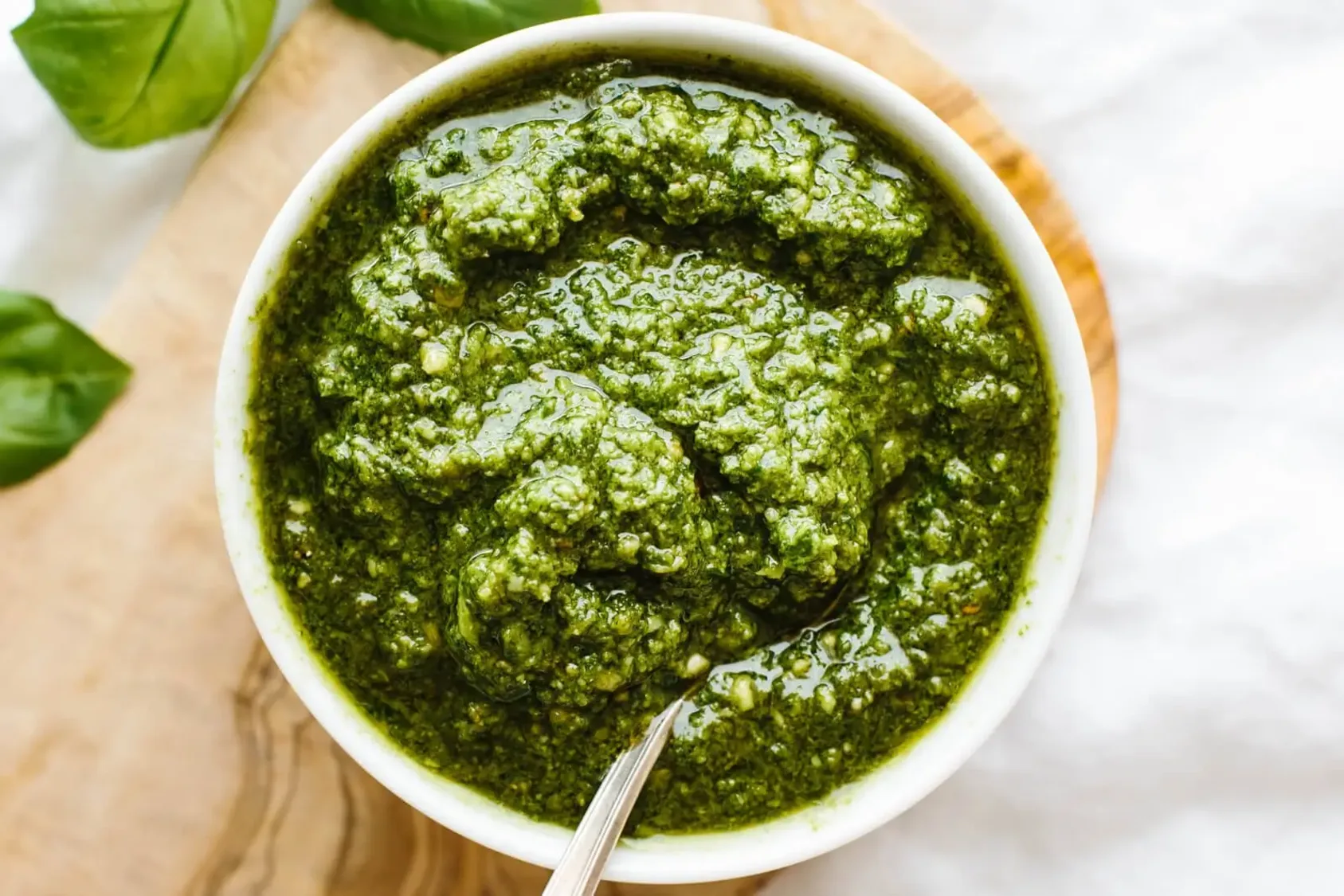
Pesto
Traditional Genovese sauce made with fresh basil, pine nuts, garlic, olive oil and Parmesan cheese.
Ingredients
- •Fresh basil
- •Pine nuts
- •Garlic
- •Olive oil
- •Parmesan cheese
- •Pecorino cheese
- •Salt
Instructions
Prepare Ingredients
Toast pine nuts and wash basil leaves
Blend
Combine all ingredients in a food processor until smooth
Pesto is a vibrant green sauce that originated in Genoa, Italy, made by grinding fresh basil leaves with pine nuts, garlic, olive oil, and aged cheeses. Its name comes from the Genoese word "pestâ," which means "to pound" or "to crush," referring to the traditional preparation method using a marble mortar and wooden pestle.
Dating back to the 16th century, pesto was born in the Liguria region where sweet Genovese basil flourishes in the Mediterranean climate. Originally, the sauce was created as a way to preserve basil's freshness and flavor throughout the year. The traditional recipe was passed down through generations of Ligurian families, each adding their own subtle variations while maintaining the core ingredients.
Making authentic pesto is an art that requires attention to detail. The basil leaves should be young and tender, carefully washed and dried to preserve their delicate flavor. Pine nuts are lightly toasted to enhance their nutty taste. When blending, it's crucial not to over-process the ingredients to maintain the sauce's characteristic texture and prevent the basil from oxidizing and turning dark.
While traditional Genovese pesto follows a strict recipe, modern variations have emerged worldwide. Some replace pine nuts with walnuts or almonds, while others experiment with different herbs like parsley or arugula. Sun-dried tomatoes, roasted peppers, or even kale can be used to create unique pesto variations, though purists might argue these aren't true pesto.
In Italy, pesto is most commonly served with pasta, particularly trofie or trenette, traditional Ligurian pasta shapes. It's also delicious drizzled over minestrone soup, spread on crusty bread, or used as a condiment for grilled vegetables and meats. Italians never heat their pesto, as this would destroy its fresh flavors and vibrant color.
From a nutritional standpoint, pesto is rich in healthy fats from olive oil and pine nuts, which provide heart-healthy monounsaturated fats and omega-3 fatty acids. The basil offers antioxidants and anti-inflammatory properties, while garlic provides immune-boosting compounds. However, due to its high caloric content from oils and cheese, pesto should be enjoyed in moderation. Those with nut allergies should be cautious and can consider nut-free variations.
